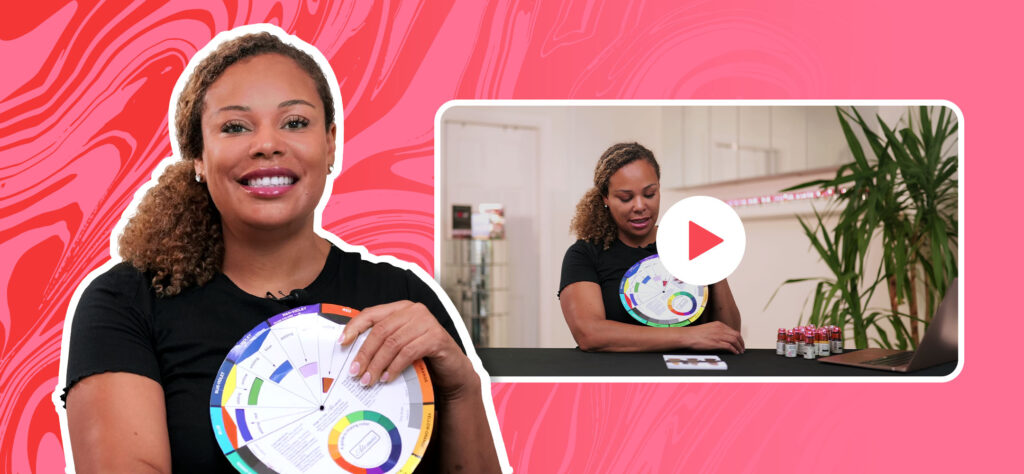Natalie Della-Verde Colour Theory Guide
Colour theory lays the foundation of successful permanent makeup application. It provides a base for understanding how to choose the right pigment for your client’s skin. Healed results will be a combination of the pigment colour and the natural undertones of the client’s skin so it’s vital to ensure you understand both the makeup of the pigment and the skin tone of your client so you can match correctly!
We were lucky enough to have Natalie Della-Verde talk us through colour theory; you can watch the YouTube video on the Killer Beauty channel or read on to find out what was discussed in the video!
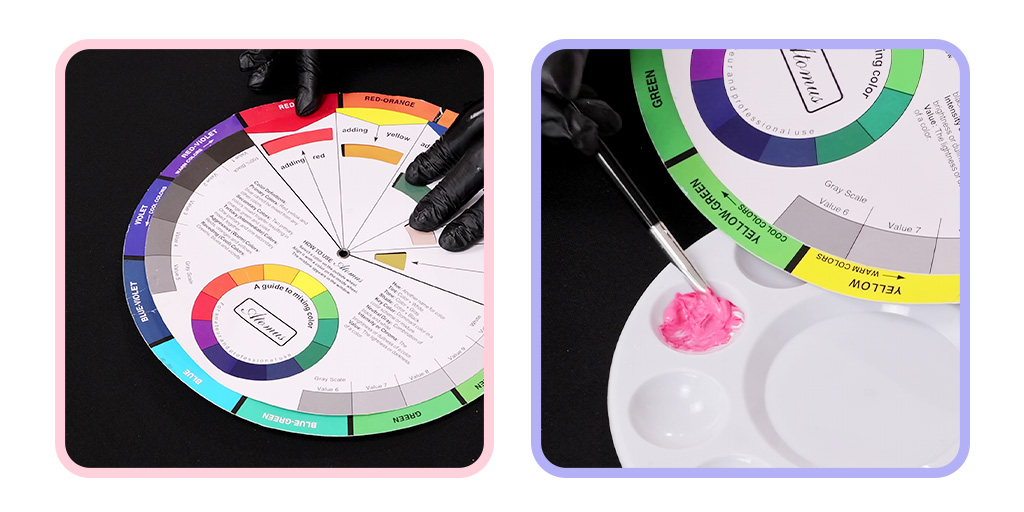
Understanding Pigment Formulations
Natalie starts by highlighting the importance of understanding how PMU pigments are formulated. Each pigment formulation has a unique composition made up of a coloured powder, a liquid which acts as the carrying agent, a binding agent, and a preservative.
It’s important to be aware that every brand has a different formula. So, you should always check the bottle carefully before using a pigment to ensure you know exactly what it’s made from and that you’re confident of the result it’s going to provide!
Using The Colour Wheel To Identify The Values of Colours
Natalie skilfully uses the Colour Wheel to identify the value of a colour. This refers to the lightness or darkness of a colour. A lighter colour or shade will have a higher value whilst a darker colour or shade, such as a deep brown or dark red, will have a lower value.
As Natalie demonstrates in this video, to darken the value of a colour you can add a darker colour such as black; to lighten the value of a colour, add a lighter colour such as white.
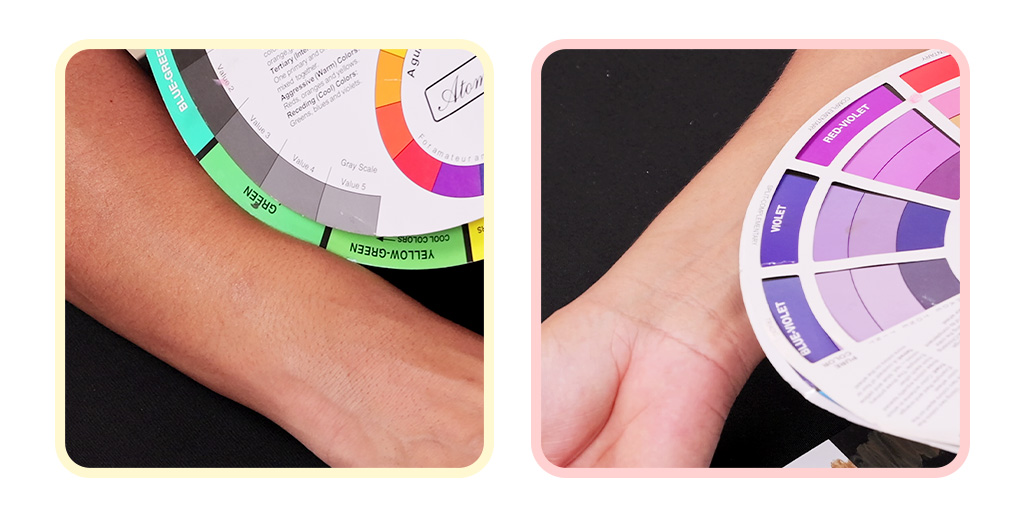
Identifying the value of the pigment as well as the value of the client’s skin helps when selecting the right pigment. For example, you wouldn’t want to use a dark black pigment on a client with very light skin because the contrast would be too great. And you wouldn’t want to use a lighter pigment on a client with darker skin because there would be no contrast.
Understanding the value of a pigment is an important part of colour theory as it helps to choose a pigment that matches or complements the client’s skin tone. It can also help when mixing pigments to achieve a shade that will work well with the client’s natural skin tone and provide the intended outcome!
Understanding Opacity and Undertones of a Pigment
In the final part of the video, Natalie helps us understand how to identify the opacity level and undertones of a pigment.
Opacity refers to the level of coverage a pigment gives. If there is a lower level of opacity, it will appear more sheer on the skin. PMU pigments with a higher opacity level tend to last longer in the skin and are more visible when healed. By adding carbon (black) and titanium dioxide (white) to a pigment, this will give it opacity.
It’s also important to consider the undertones of the pigment and your client’s skin, which you can do by comparing it to the colour wheel. Undertones are often split into warm, cool, and neutral. Understanding how these colours work together and how they work with the different skin tones is paramount in selecting the right colour for your client.
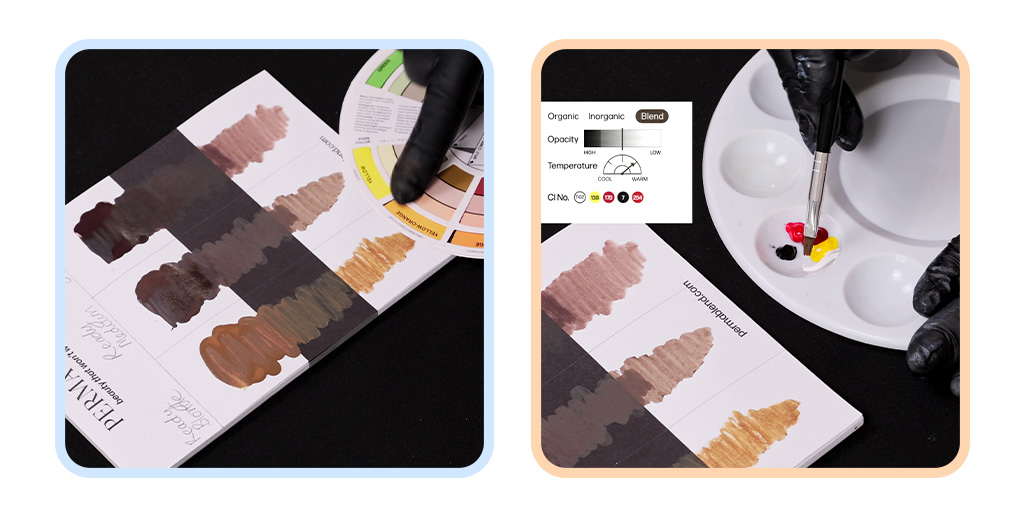
Top Tips from Natalie
- Checking undertones: When checking the undertone of a client’s skin, there are a few ways you can do this. Natalie demonstrates in the video that you can generally get a good idea of this by looking at the veins on your client’s wrist. It gives good clues as to what undertones a client has!
- Warming up the pigment: Once you’ve identified the undertones of your client and of the pigment, it might be necessary to warm up the pigment with a modifier or corrector. When you add a warming modifier, especially to organic pigments used on melanin-rich skin, it can prevent any treatments from having an ashy look when healed.
- Make sure you get a balanced contrast: You want to know the value of the pigment and of your client’s skin to ensure the contrast is just right; you don’t want it to be too stark and you also don’t want to end up having no contrast.
By mastering colour theory, PMU artists can make informed decisions about pigment selection, leading to satisfied clients and long-lasting, true-to-tone results.
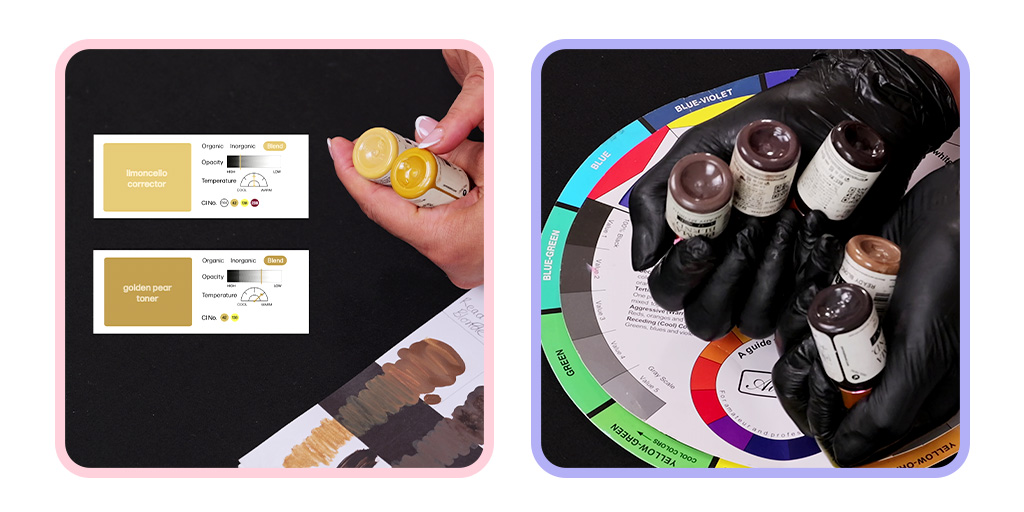
To learn more about colour theory, understand your pigments, and invest in your PMU education, watch the full video with Natalie Della-Verde on our YouTube channel and let us know in the comments what you thought!
